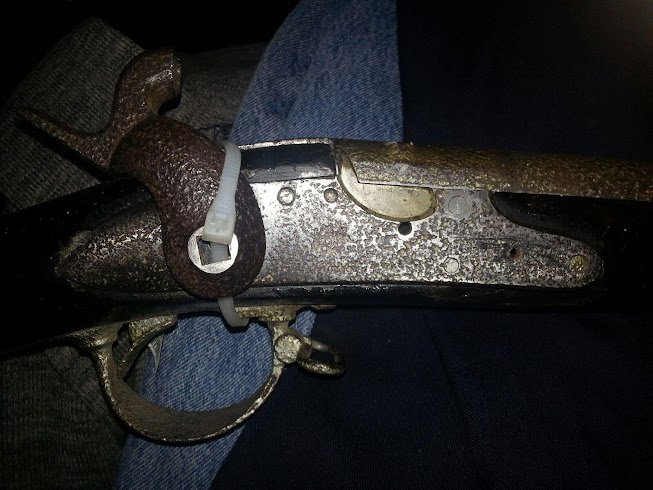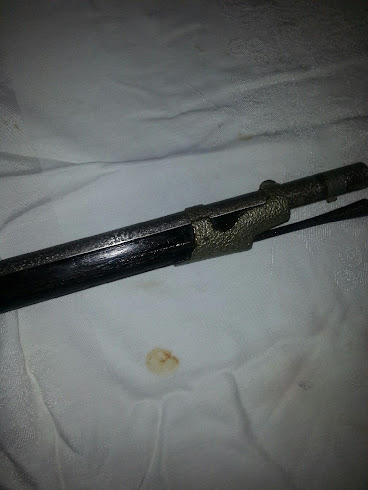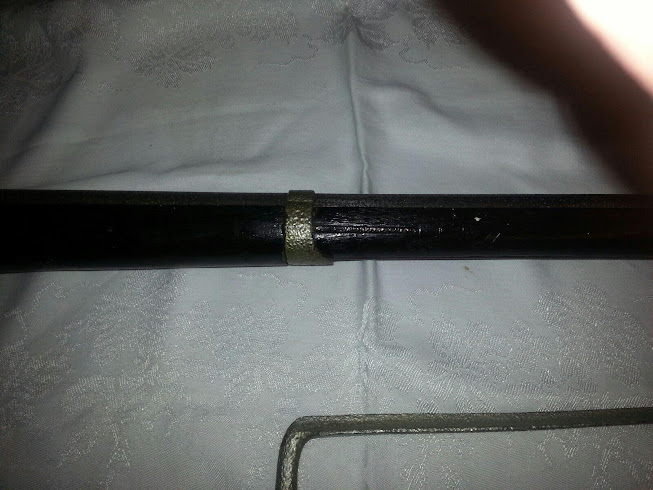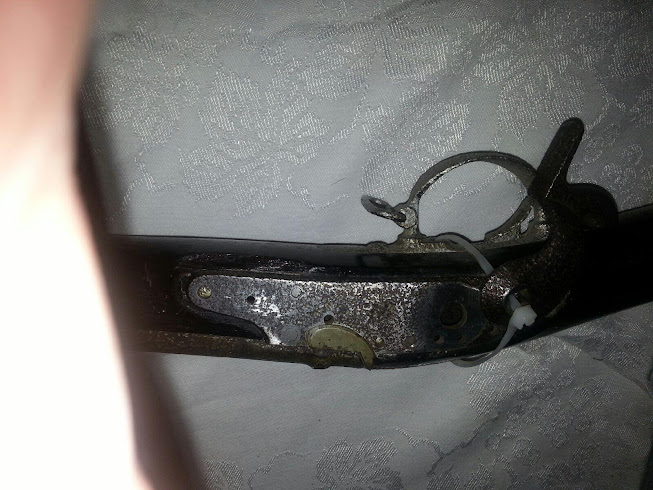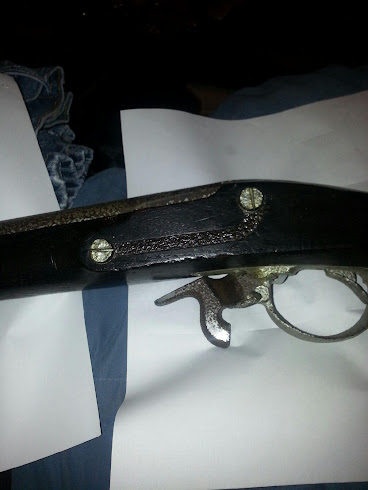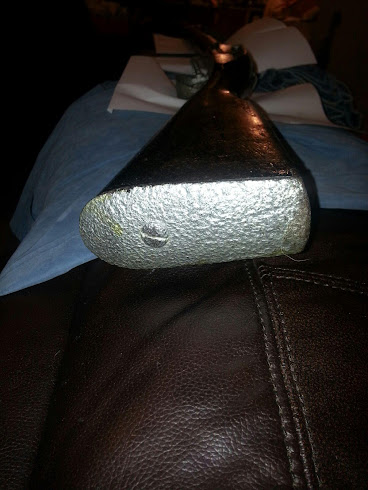Hi gentlemen - just purchased a "relic condition" musket that is supposedly an excavated specimen from around the Prairie Grove battlefield in Arkansas. This story seems plausible to me for a number of reasons, not the least of which is that the area around the front sight where the bayonet would go (which comes with it!) is obviously better preserved than the rest of the barrel, indicating to me that it must have been left submerged with the bayonet fixed. I haven't received it yet, but I'm already rather perplexed by it. It appears to be an 1816 conversion lock with a Belgian conversion. The perplexing part is that it appears to have mostly 1842 model metal parts on it (left side plate, front band, trigger guard, ramrod, stock). I'm confused as to how this would even happen, unless there was just a surplus of random 1842 parts lying around when they put it together. The wear and pitting on all the metal parts, 1816 and 1842 alike, is consistent.
One amazing point is that the stock is in extremely good condition for having been submerged in mud for who knows how long, while the metal is quite pitted, but still distinguishable.
Any thoughts on how this odd combination could have happened?
One amazing point is that the stock is in extremely good condition for having been submerged in mud for who knows how long, while the metal is quite pitted, but still distinguishable.
Any thoughts on how this odd combination could have happened?




